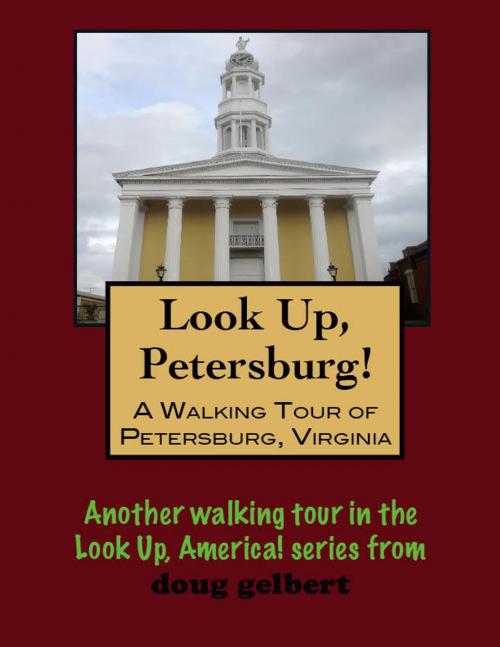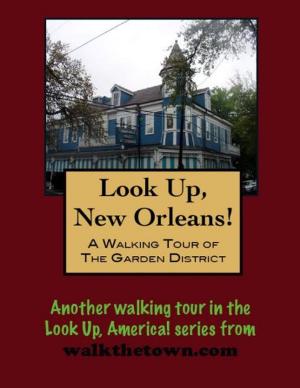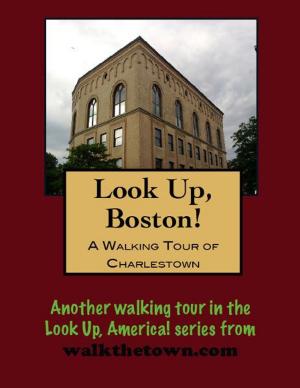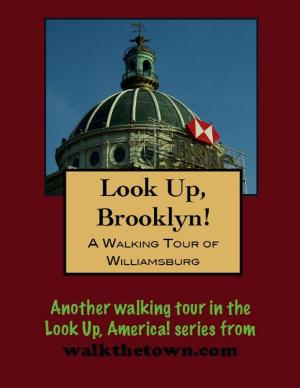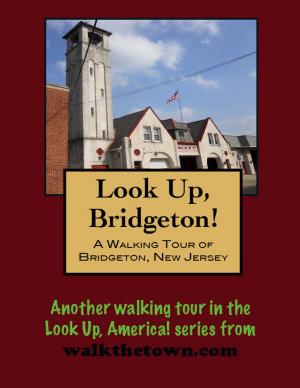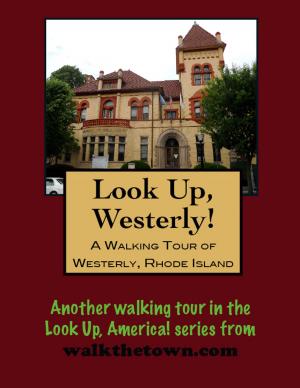| Author: | Doug Gelbert | ISBN: | 9781458024145 |
| Publisher: | Doug Gelbert | Publication: | December 29, 2010 |
| Imprint: | Smashwords Edition | Language: | English |
| Author: | Doug Gelbert |
| ISBN: | 9781458024145 |
| Publisher: | Doug Gelbert |
| Publication: | December 29, 2010 |
| Imprint: | Smashwords Edition |
| Language: | English |
There is no better way to see America than on foot. And there is no better way to appreciate what you are looking at than with a walking tour. Whether you are preparing for a road trip or just out to look at your own town in a new way, a downloadable walking tour is ready to explore when you are.
Each walking tour describes historical and architectural landmarks and provides pictures to help out when those pesky street addresses are missing. Every tour also includes a quick primer on identifying architectural styles seen on American streets.
There was a trading post on this spot at the head of navigation on the Appomattox River before 1850. When Peter Jones became proprietor the small settlement became known as Peter’s Point. Petersburg was granted a charter in 1748 and by the time of the American Revolution the town was important enough to be raided by British forces under the direction of turncoat Benedict Arnold.
In the early 1800s Petersburg was the rival and even the superior to its neighbor to the north, Richmond. Crippling fires in 1815 and 1826 impeded progress but in 1850, when the town was consolidated with the nearby settlements of Blandford, Pocahontas, and Ravenscroft to become a city it was the third largest in Virginia with a population of 14,010.
During the Civil War, Ulysses S. Grant based his assault on the Confederate capital in Richmond on severing the supply line from the south at Petersburg. In June of 1864 the city became the “last ditch of the Confederacy.” Four days of sharp fighting pushed the Southern lines back one mile, where both armies entrenched. The longest siege ever to take place on American soil was about to begin.
Almost immediately the 48th Regiment of Pennsylvania Volunteers, comprised mostly of coal miners, began digging a 511-foot mine shaft into the Confederate line, quietly carrying out tons of soil in cracker boxes. On July 30, after a month of digging, the Federals exploded four tons of powder under the Confederate battery, blowing 278 Southern defenders into the air. In the confusion that followed, the Union troops storming the line plunged directly into the massive crater created by the explosion rather than advancing around it. The Confederates were able to seal their defensive line and inflicted horrible casualties in a determined counterattack. The siege was to last nine months. Before it ended on April 2, 1865, a total of 42,000 Union and 28,000 Confederate troops were killed or captured in the Petersburg campaign.
The city began anew almost immediately after the war ended. The port of Petersburg was a commercial center and the city evolved into an important railroad hub as well. Census reports in 1880 indicated there were 70 more businesses operating in Petersburg than there were twenty years earlier when the Civil War began. Most found work in the tobacco factories but there was peanut processing and flour mills a silk mill, pencil plants and furniture-building as well.
Our walking tour will start where Peter Jones managed the loading and unloading of packets 350 years ago and continue up the hill to the historic Courthouse District...
There is no better way to see America than on foot. And there is no better way to appreciate what you are looking at than with a walking tour. Whether you are preparing for a road trip or just out to look at your own town in a new way, a downloadable walking tour is ready to explore when you are.
Each walking tour describes historical and architectural landmarks and provides pictures to help out when those pesky street addresses are missing. Every tour also includes a quick primer on identifying architectural styles seen on American streets.
There was a trading post on this spot at the head of navigation on the Appomattox River before 1850. When Peter Jones became proprietor the small settlement became known as Peter’s Point. Petersburg was granted a charter in 1748 and by the time of the American Revolution the town was important enough to be raided by British forces under the direction of turncoat Benedict Arnold.
In the early 1800s Petersburg was the rival and even the superior to its neighbor to the north, Richmond. Crippling fires in 1815 and 1826 impeded progress but in 1850, when the town was consolidated with the nearby settlements of Blandford, Pocahontas, and Ravenscroft to become a city it was the third largest in Virginia with a population of 14,010.
During the Civil War, Ulysses S. Grant based his assault on the Confederate capital in Richmond on severing the supply line from the south at Petersburg. In June of 1864 the city became the “last ditch of the Confederacy.” Four days of sharp fighting pushed the Southern lines back one mile, where both armies entrenched. The longest siege ever to take place on American soil was about to begin.
Almost immediately the 48th Regiment of Pennsylvania Volunteers, comprised mostly of coal miners, began digging a 511-foot mine shaft into the Confederate line, quietly carrying out tons of soil in cracker boxes. On July 30, after a month of digging, the Federals exploded four tons of powder under the Confederate battery, blowing 278 Southern defenders into the air. In the confusion that followed, the Union troops storming the line plunged directly into the massive crater created by the explosion rather than advancing around it. The Confederates were able to seal their defensive line and inflicted horrible casualties in a determined counterattack. The siege was to last nine months. Before it ended on April 2, 1865, a total of 42,000 Union and 28,000 Confederate troops were killed or captured in the Petersburg campaign.
The city began anew almost immediately after the war ended. The port of Petersburg was a commercial center and the city evolved into an important railroad hub as well. Census reports in 1880 indicated there were 70 more businesses operating in Petersburg than there were twenty years earlier when the Civil War began. Most found work in the tobacco factories but there was peanut processing and flour mills a silk mill, pencil plants and furniture-building as well.
Our walking tour will start where Peter Jones managed the loading and unloading of packets 350 years ago and continue up the hill to the historic Courthouse District...
